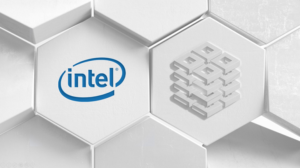These giants showcase a tapestry of innovations, from powering cutting-edge smartphones to enabling electric vehicles (EVs) and revolutionizing data centers. The first focuses on GaN and SiC technologies for multiple sectors, the second one’s diverse AI platforms and the third’s ambitious node development underscores a commitment to shaping the future.
This article delves into these semiconductor stocks regarding strategies, market positioning and technological leaps, illuminating the intricate dance between innovation and market demand and highlighting their pivotal roles in shaping the semiconductor industry’s landscape.
Navitas (NVTS)
Navitas‘ (NASDAQ:NVTS) effective partnerships and market penetrations reinforce its growth potential. Samsung Sandstone adopted the company’s integrated gallium nitride (GaN) to power the latest Galaxy S-23 and other models. That signifies a vital market win and immediate contribution to revenue ramp-up in Q3 and Q4.
Additionally, Navitas focuses on mobile and consumer segments, evident from over a dozen customer projects in development. The company is targeting the fastest charging segment of 100 watts or more, projected to contribute over $10 million annually in revenue.
In the solar and energy storage markets, macroeconomic factors led to some near-term market softness impacting Navitas’ silicon carbide (SiC) business. The company foresees robust growth in its customer pipeline, aligning with the anticipated market recovery in H2 2024.
Similarly, Navitas observed significant increases in its customer pipeline for onboard and roadside chargers in the electric vehicle market. A 6.6 kilowatt, 800-volt onboard charger platform has been developed, integrating Gen 3 fast silicon carbide devices and GaN safe IC. That indicates Navitas’ focus on innovation and its ability to cater to evolving market demands.
The company responded to the increasing power demands of AI and edge computing in the data center sector with a new alternating current (AC) to direct current (DC) platform design. Thus, it is showcasing superior energy efficiencies and power density. As a result, these efficiencies attract many projects in its customer pipeline.
Finally, Navitas’ customer pipeline is expanding in the appliance and industrial sectors. That drives regulatory requirements for energy efficiency and consumer demands for power density improvements, demonstrating the company’s market traction.
Super Micro (SMCI)

Super Micro’s (NASDAQ:SMCI) comprehensive AI solution portfolio encompasses various platforms, including the Nvidia (NASDAQ:NVDA) HGX-H100, Intel (NASDAQ:INTC) Gaudi 2 and AMD (NASDAQ:AMD) MI250, MI300X and MI300A-based platforms. That diverse range of offerings allows the company to enhance its market competitiveness and potentially increase its market share in the accelerated computing space.
Additionally, the company’s focus on continuous innovation is evident from its consistent efforts to launch new AI-optimized platforms. Introducing products like the Nvidia CG1, CG2 Grace Hopper Superchip, and Nvidia Grace CPU Superchip highlights Super Micro’s agility in responding to market demands and staying ahead in the rapidly evolving AI technology.
To be specific, Super Micro focuses on enhancing storage solutions. That includes PCIe Gen 5-based E1.S and E3.S Petascale All-Flash storage servers, suggesting its focus on catering to evolving storage needs. That innovation aligns with the increasing demand for high-performance storage solutions to handle massive datasets. It expands Super Micro’s offerings further and addresses clients’ requirements comprehensively.
Moving to operating leverage and the bottom line, the company can maintain substantial operating leverage during a traditionally soft quarter. That is evident from its non-GAAP earnings hitting $3.43 per share (Q1 fiscal 2024), indicating operational efficiency and cost management. Hence, this stability in earnings suggests Super Micro’s ability to generate consistent profits even amidst challenging market conditions.
Finally, Super Micro has a positive cash flow generation of $271 million and a debt reduction of $144 million, highlighting its robust financial position and effective debt management strategies. Lastly, the company’s expansion plans include surpassing the current capacity of 4000 racks per month and expanding revenue capacity beyond $20 billion. Therefore, this represents its confidence in sustained growth and preparedness for scaling operations.
Intel (INTC)
Intel’s progression in achieving notable process and product milestones reflects its focus on innovation and technological advancement. The company’s emphasis on node development and manufacturing efficiency is reflected in various achievements.
Fundamentally, the strategic goal of achieving five nodes within a four-year timeline underscores Intel’s ambition and dedication to technological progression. The milestone of completing Intel 7 and delivering nearly 150 million units (Alder Lake, Raptor Lake and Sapphire Rapids) to the market, demonstrates the company’s execution capabilities.
Furthermore, initiating shipments for Meteor Lake on Intel 4 during Q3 2023 was a crucial step forward. The company has aggressively ramped up highly productive Extreme Ultraviolet Lithography (EUV) tools. That provides over a 20% capital efficiency advantage compared to earlier tools, highlighting Intel’s focus on enhancing manufacturing efficiency.
Additionally, high-volume EUV manufacturing is expanding in Oregon and Ireland. That shows Intel’s geographic diversification and resilience in establishing itself as a leading semiconductor manufacturer across major regions globally.
Similarly, Intel’s focus on advancing semiconductor technology is evident through its pioneering developments in transistor architecture, specifically RibbonFET and PowerVia. These innovations mark significant milestones in the pursuit of industry-leading process technology. Specifically, the progression into the angstrom era with Intel 20A and Intel 18A indicates a forward leap in Intel’s technological edge. Also, milestones like the 0.9 release of the Process Design Kit (PDK) for Intel 18A indicate readiness for commercial production.
Lastly, completing the invention phase for RibbonFET and PowerVIA marks a critical step forward. Intel’s move towards production-ready, industry-leading process technology underscores the company’s pursuit of innovation and ability to push technological boundaries.
As of this writing, Yiannis Zourmpanos held a long position in INTC. The opinions expressed in this article are those of the writer, subject to the InvestorPlace.com Publishing Guidelines.

